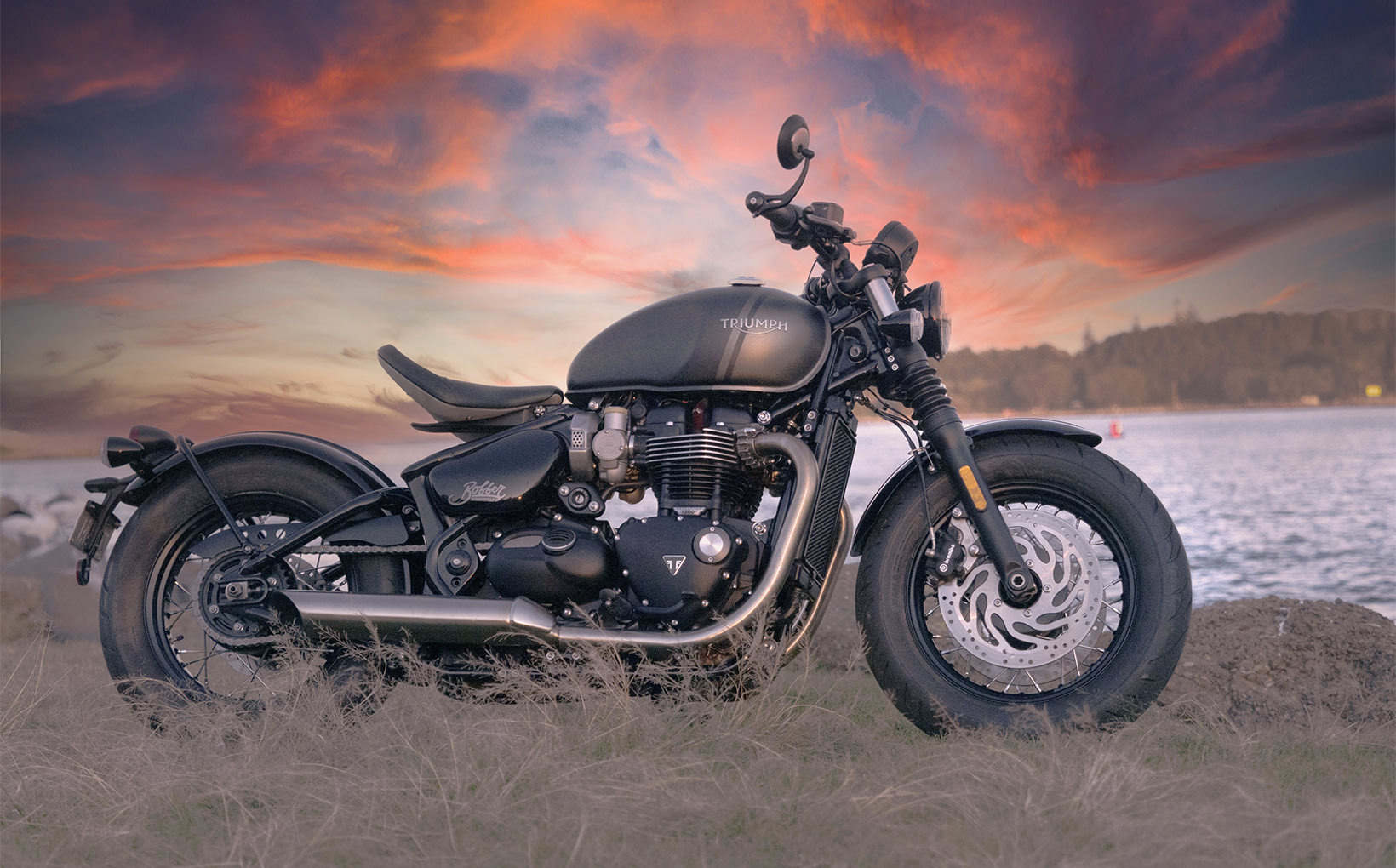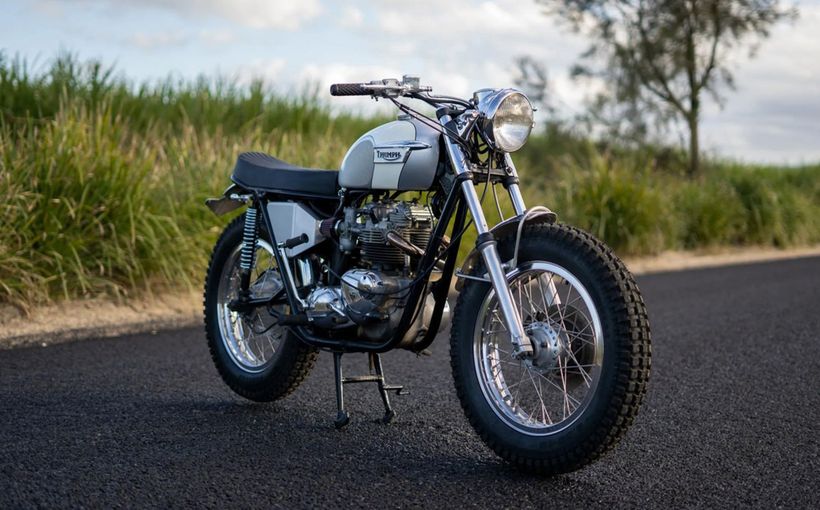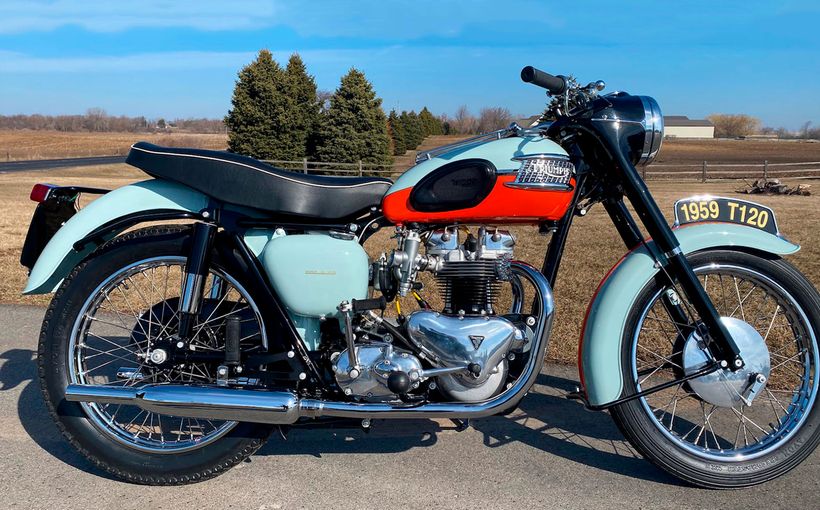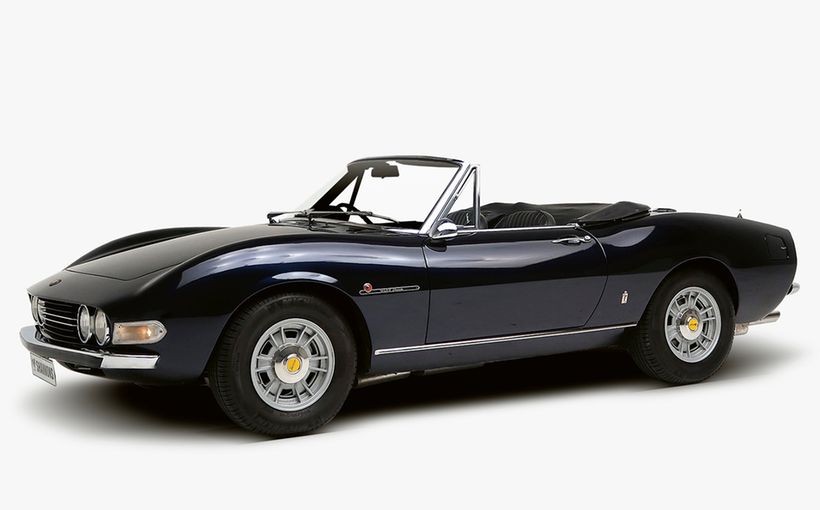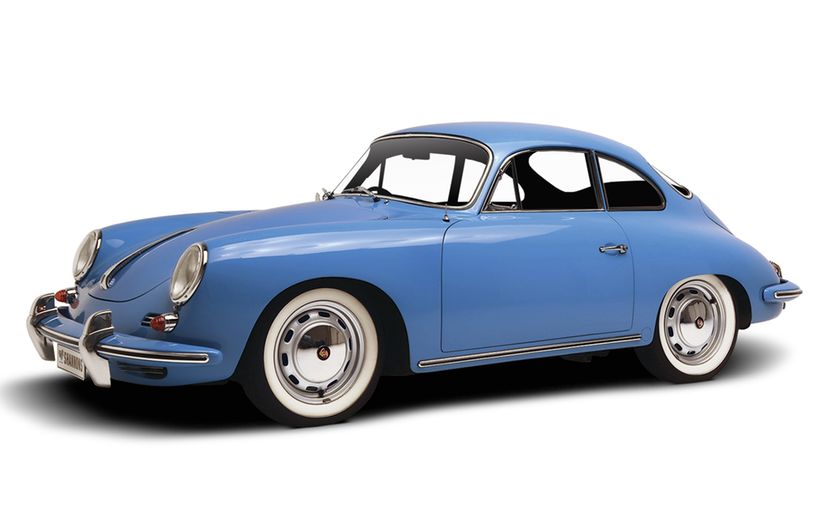MY21 Triumph Bonneville Bobber: British Bobber

BY PHIL JAMES PHOTOGRAPHY PATERSON
The 19-inch front wheel and single front disc must have seemed like a good idea for the Bobber, but the switch to a fat front wheel and tyre combination plus the addition of a second disc has made the current Bobber much cooler.
Add in increased engine performance and better forks, and Triumph’s addressed most of the issues owners had with the previous iteration of the bike while making it even more attractive to new bike buyers.
UPGRADES
The engine power is up and many other parts have been upgraded, but the biggest change is the new front end. The 19-inch wheel has gone — it’s now a 16-inch with a high-profile tyre fitted (this maintains a reasonable wheel diameter). The OEM Avon Cobras were specially designed for the Bobber and are light weight.
The forks are now Showa cartridge type and diameter has increased from 41mm to 47mm. It’s more than a cosmetic upgrade and improves the ride over sharp bumps.
ARR thinks the most important upgrade is the new twin disc/Brembo caliper brakes. While Triumph has generally done a great job of hiding the bike’s modern technology from sight, there’s not much that can be done with brakes. At least by choosing black paint for the calipers, they don’t catch the eye immediately. We’d like to see a Bobber fitted with a period correct four leading shoe drum brake, but that’s not happening (ABS is compulsory these days, so there won’t be any more drum brakes).
The latest Euro 5 incarnation of the 1200 High Torque twin has reduced internal inertia, helping performance and fuel economy. It makes a little more power and torque and comes with a 16,000km service interval. Fuel tank size is up 15 per cent to 12 litres and claimed range increased by 30 per cent.

STYLING
The Bobber looks great in photos and even better in the flesh. Triumph is very good at retro styling and with the Bobber, the company has created something quite special. Non-bikers think it’s a modified vintage machine.
Making modern technology look old isn’t easy and this is where Triumph has come up with some clever solutions. Things like the exhaust. It looks like a straight pipe into a small muffler, but it goes via a catalytic converter located under the bike. There are the stylised cooling fins on the engine distracting the eye from the camouflaged radiator, and the unit construction engine looks like an early 20th-century separate engine/gearbox design.
Other design choices are straight from older machines. To get the right look, the Bobber is low to the ground, resulting in limited suspension travel and cornering clearance. The small wheels and high-profile tyres add to the vintage hot rod look.

Impressively, despite all this apparent oldness, Triumph has produced a machine that won’t scare modern motorcyclists. We’ve all become accustomed to bikes that absorb bumps, turn and stop as required. All things a genuine 1940s Bobber would struggle with.
To normalise the riding experience, Triumph has given the Bobber unremarkable steering geometry and wheelbase. The steering trail figure of 92.5mm is shortish, moving the dial towards lightness and away from stability. That’s a good call; at speed, arms like hydraulic rams aren’t required for turn initiation. Conversely, testing stability in the “tank slapper” zone, while pinned in bumpy corners, isn’t likely for most Bobber riders.
One area where the styling may cause problems is the ergo fit for smaller riders. Relative to other Bonnevilles, the seat is lower and further from the bars. I’m 170cm and found the bars a bit of a stretch. Fortunately, different bars with more pullback and/or bar risers can fix this.

MODERN STUFF INCLUDED
The stripped look hides a quite a few modern touches. The Bobber comes with cruise control, rain mode and switchable traction control, all of which are very simple to operate. Possibly the simplest operation on the market.
The cruise control is one button, “on” or “off”. Once it’s activated, one merely pushes the button again and the bike holds its speed. Accelerate or brake and it turns off. Once the new speed is reached, push the button again and it holds that speed. Getting the hang of it takes less time than reading this paragraph. It’s brilliant and was used often.
The mode button on the right switch block toggles between normal and rain modes. No overthinking required there.
The traction control is toggled on or off via the small LCD screen in the dash. Rubber road marking has never been easier (assisted by the forward weight bias of the bike).
Other modern stuff includes an assist/slipper clutch, LED lighting, adjustable controls and adjustable seat.

THE RIDE
Bikes like the Bobber are about fun… not fast. However, if they are dynamically challenged, “fun” is hard to achieve, so reasonable chassis prowess is important. Triumph seems to be aware of this, as the details reveals.
For instance, that cool, low, long look limits the Bobber’s lean angle prematurely, however Triumph has done all it can within the bike’s non-negotiable design parameters to maintain clearance. The pipes and pegs are tucked up as much as possible.
Cornering clearance at “sensible” speed is sufficient and many won’t find its limit. However, moments of serious cornering enthusiasm immediately generate sparks and excitement…
The Bobber has reasonable suspension (it’s not from the budget bin and it’s up to the job), but the limited travel can make it harsh at open road speeds. Running the right tyre pressure can help. Owners should experiment and find their “sweet spot” in the trade-off between bump absorption at lower pressure and steering precision at higher pressure. Even a few PSI variations will be noticeable.
The small wheel/large tyre combo does introduce the potential for vague and heavy steering. Triumph has mitigated that by using light-weight tyres and short steering trail. The steering is reasonably precise and only becomes vague when riders start chucking it into a corner at speed. Time for an ARR Top Tip: stick with the OEM Avon Cobra; heavier tyres may have the Bobber cornering like a ’50s Cadillac… without power steering.
Interestingly, the Bobber’s 1940’s signature styling gives it a thoroughly modern weight distribution. Its mass is centralised slightly towards the front wheel and carried low in the frame. The battery, exhaust system and even the ignition switch sit low. Consequently, it’s nimble and easy to manoeuvre. I was genuinely shocked when I read the curb mass is 251kg. It feels more like 200.



The high torque engine is perfect for the Bobber. It feels strong, has a wonderful purr at 60-90km/h, and critically has the slow, lumpy idle so beloved by cruiser riders. Noise wise, Triumph has nailed it. It is loud enough to amuse the rider but not so loud that it will offend others.
A word of warning about exhaust mods: making it louder probably won’t make it sound better and could possibly make it sound like a loud metric cruiser. No offence intended to owners of loud metric cruisers, but it’s not a noise that should come from a Triumph.
The clutch deserves special mention. It has a light action and the fat-adjustable lever feels exceptionally good in the hand.
The braking package is good for this style of bike, very good in fact. It doesn’t have Supersport stopping power (the lever effort is too high for that), but if an errant animal must be avoided, an adrenaline-assisted lever squeeze will slow the bike very quickly.
At ARR we think the Bobber handles and stops well for this class of bike. It cuts through city congestion with ease and 110km/h cruising on the motorway is no problem. Any faster and the rider must brace against the wind. As expected, the short suspension travel means it’s more comfortable doing urban work than being on country roads.
So, it’s no hyper naked, but having fun isn’t curtailed by chassis limitations. It may even provide fun in unexpected ways — like showering mates behind with sparks.

CONCLUSION
There have been some very good retro-styled bikes released over the last few years. We’ll define “good” as nailing the retro look from the past, but not punishing their owners with a riding experience from the past. The Triumph Bobber is one of the best examples of this. Its proportions and styling catch the eye in a way few other bikes do. It evokes an era long gone, yet it rides much like any other un-faired contemporary bike.
We at ARR think it’s so striking that in the decades to come, it will be a collectable. In the meantime, it will provide owners with a very satisfying experience.

Specifications: 2021 Triumph Bonneville Bobber
ENGINE
Type: Liquid-cooled, 4-stroke, SOHC, 4-valve, 2-cylinder
Capacity: 1200cc
Bore x stroke: 97.6 x 80mm
Compression ratio: 10.0:1
Fuel System: Sequential Multipoint Fuel Injection,
Ignition: Digital
Power: 76.9 bhp [57.5 Kw] @ 6100 rpm
Torque: 106 Nm @ 4000 rpm
TRANSMISSION
Type: 6 speed
Final drive: Chain
Clutch: Wet multiplate, Torque Assist
CHASSIS AND RUNNING GEAR
Chassis: Tubular Steel, Twin Cradle.
Swingarm: Fabricated Twin Sided Steel
Front suspension: Showa Cartridge 47mm
Rear suspension: Mono-shock RSU with linkage.
Front brakes: Brembo 2-Piston Dual Discs, 310mm, ABS
Rear brake: Nissin single piston calliper, single 255mm disc, ABS
Front Wheel: Wire 32-spoke, 16 x 2.5
Rear Wheel: Wire 32-spoke, 16 x 3.5
Tyres: Front: MT90B16, Rear: 150/80 R16
ELECTRONIC RIDER AIDS
Brake Control (ABS): Yes.
Engine Power Modes: 2 modes
Traction Control: Yes
Cruise Control: Yes
DIMENSIONS AND CAPACITIES
Seat height: 690 – 700mm
Wheelbase: 1500mm
Rake: 24.5 deg
Trail: 92mm
Fuel Tank Capacity: 12 L
Wet Weight: 251Kg
ETCETERA
Price: $21,890 (ride away)
Colours: Matt Storm Grey/Ironstone, Cordovan Red, Jet Black
Service Interval: 16,000Km/12 months, whichever occurs first Test bike supplied by Triumph Australia
Warranty: 2 years, unlimited kilometres.

